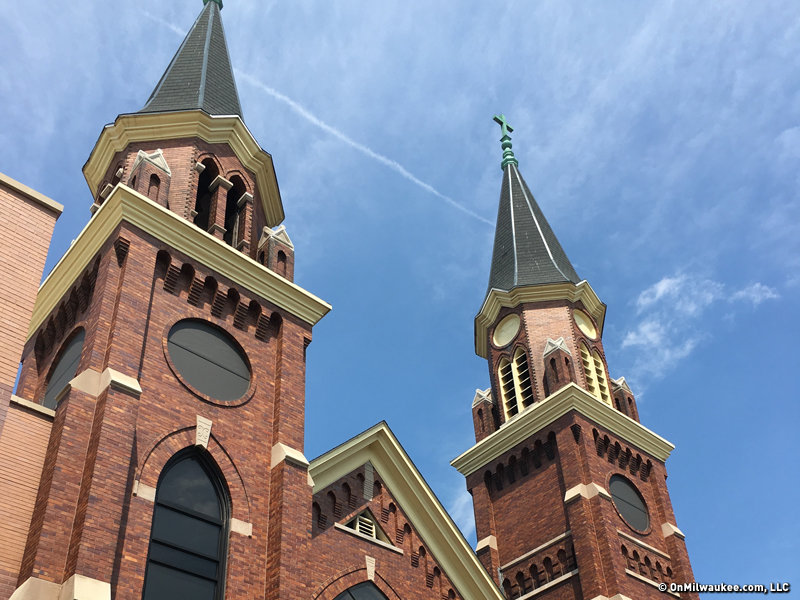When I was about 10, my fourth grade class put together a time capsule and we buried it out in a grassy patch of schoolyard out in front of the building. Since then, I’ve always been a little fascinated by the idea of leaving things in the hope that someone in the future might find them and get a little insight into our lives.
There’s a drum at my kids' school that was nicely painted and filled with who knows what on the 100th anniversary of the building. I’m kinda dying to know what’s in there. And once, when visiting a church, I got to view the contents of a time capsule unearthed during repairs. In it, there were some pretty amazing photos of the church’s construction.
This is a roundabout way of saying that when my friend Mary Ziino contacted me to say she’d found a time capsule at Notre Dame Middle School, where she works – in the former St. Wenceslaus Church, 1420 W. Scott St. – I jumped at the chance to go take a look.
St. Wenceslaus was founded on 14th and Scott in 1883 as the second Bohemian (Czech) parish in the city. To do this, the members of a South Side Czech fraternal group asked Father Suchy of St. John de Nepomuc in Haymarket to help.
Suchy, realizing just how many members of his community now lived in the area, obliged and served as pastor of both parishes for three years, until he went to the South Side full-time, in 1886.
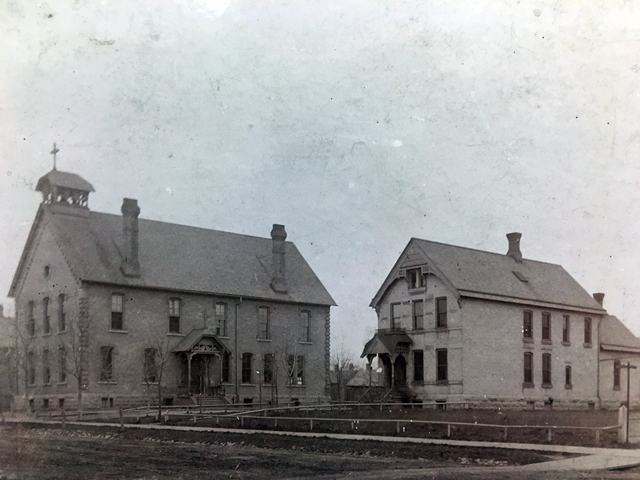
The 43 families in the parish built a combination church and two-room school was built, with a little bell tower at the top, and room for three nuns to live in the basement. A parsonage sat behind it.
Within a year, the parish had more than doubled, encompassing 116 families. With that kind of growth, expansion was inevitable and in 1914, the current building was erected.
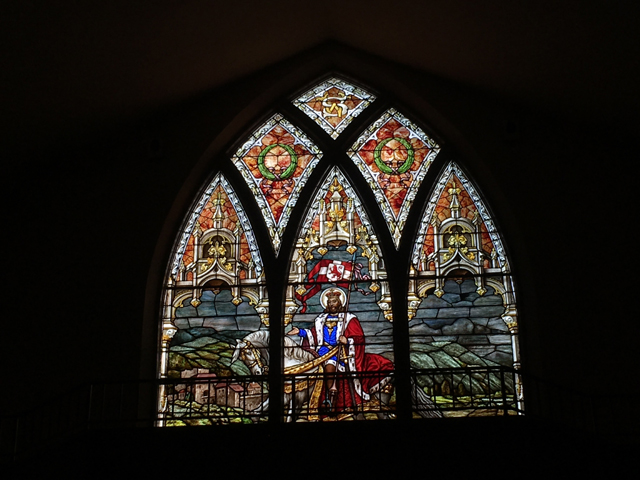
In 1939, a new school – an interesting art deco building with gothic elements – was built and still stands. In 1957, a new entrance was added to the front of the church.
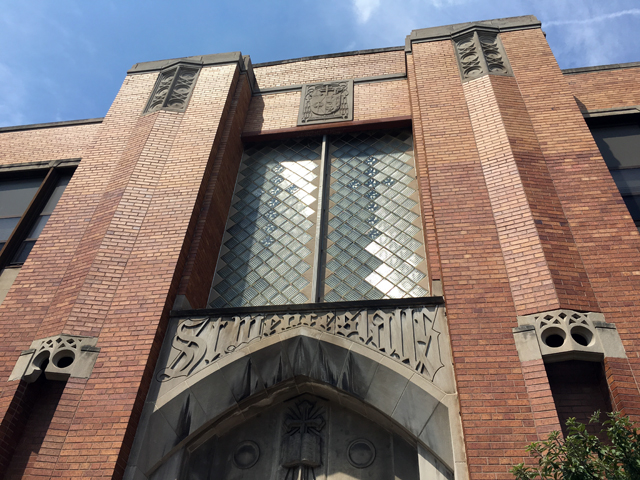
A 1961 fire required renovation of the school, which was replaced in the early ‘70s by Walker (sic) Point Middle School, run by an independent lay board. That school closed by the end of the decade, by which time the neighborhood and the parish was transitioning.
St. Wenceslaus hired a Spanish-speaking priest and in 1999 the parish merged with nearby Holy Trinity-Our Lady of Guadalupe, at which time Notre Dame Middle School occupied the building and built the office and gym building that connects the old church and school buildings.
In 2003, the church's bells were sent to St. Gregory the Great Seminary in Lincoln, Neb.
It was during the 1999 construction that a thin copper or brass box, maybe 6x16x8, was found and stored in a closet, which is where Ziino found it, according to Notre Dame Development Director Sarah Carney, who showed me its contents the other day.
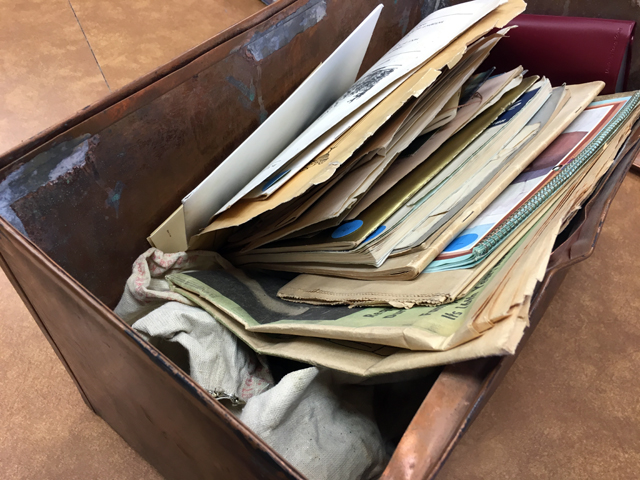
The box has the words, "Anaconda 16 oz." stamped on one side. Inside, there is an interesting mix of items from a variety of time periods. There’s what appears to be a 19th century photo of the original church and parsonage, some church bulletins from the 1910s, correspondence from the 1920s and ‘30s, and newspaper clippings and other ephemera from the 1950s.
Some of it seems rather mundane. There’s an American Bowling Congress patch in an envelope, with no explanation, for example.
Other items are exciting, including a badge from a religious society, a bill from the architect of the church and a pair of letters written two days in a row – typed with a green typewriter ribbon – from an anonymous neighbor complaining about how often the church bell was rung. One of them is absolutely livid. Both were mailed at the same time.
Much of the material contains references to Father James W. Kozak – understandable when one considers that Kozak was parish priest for 49 years, from 1929 until 1978.
Carney and Ziino have made copies of some of the old photos and hung them in frames in the Notre Dame office. But, to be honest, they don’t really know what to do with the rest, beyond holding onto it for the future and perhaps creating a little display somewhere in the building with the more interesting artifacts.
While they could find a home in an archive – say, the one maintained by the archdiocese or the Milwaukee County Historical Society – I like the idea of the items remaining in situ, continuing to be a part of and a testament to the historical site of St. Wenceslaus.
Here are some of the items...
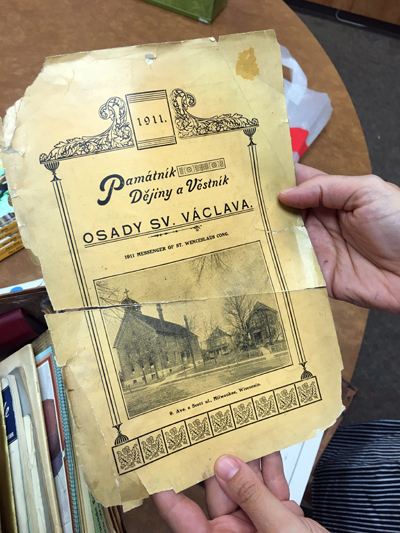
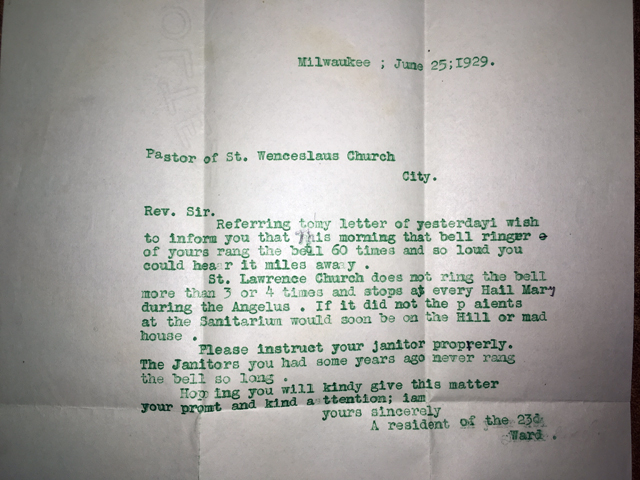

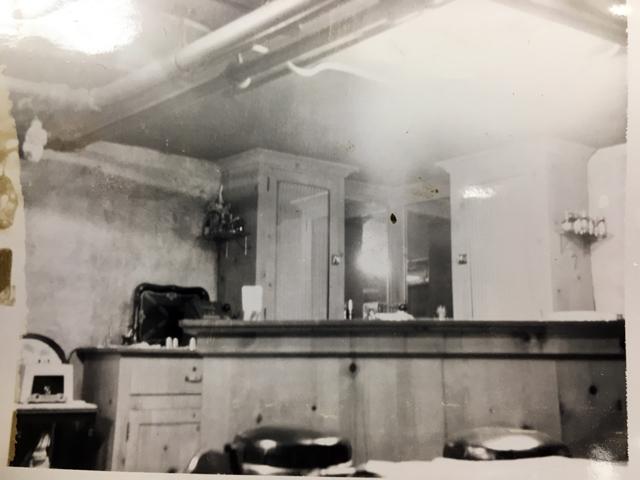

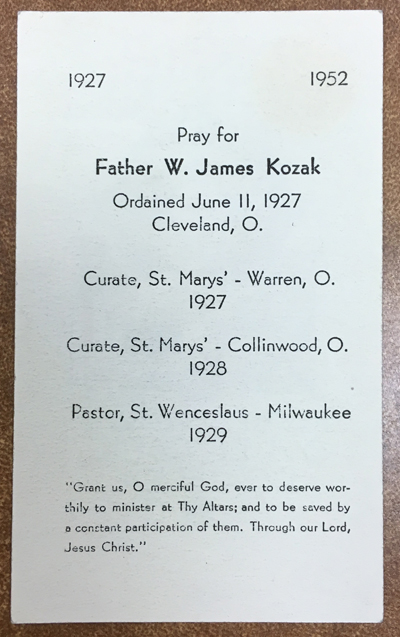
Born in Brooklyn, N.Y., where he lived until he was 17, Bobby received his BA-Mass Communications from UWM in 1989 and has lived in Walker's Point, Bay View, Enderis Park, South Milwaukee and on the East Side.
He has published three non-fiction books in Italy – including one about an event in Milwaukee history, which was published in the U.S. in autumn 2010. Four more books, all about Milwaukee, have been published by The History Press.
With his most recent band, The Yell Leaders, Bobby released four LPs and had a songs featured in episodes of TV's "Party of Five" and "Dawson's Creek," and films in Japan, South America and the U.S. The Yell Leaders were named the best unsigned band in their region by VH-1 as part of its Rock Across America 1998 Tour. Most recently, the band contributed tracks to a UK vinyl/CD tribute to the Redskins and collaborated on a track with Italian novelist Enrico Remmert.
He's produced three installments of the "OMCD" series of local music compilations for OnMilwaukee.com and in 2007 produced a CD of Italian music and poetry.
In 2005, he was awarded the City of Asti's (Italy) Journalism Prize for his work focusing on that area. He has also won awards from the Milwaukee Press Club.
He has be heard on 88Nine Radio Milwaukee talking about his "Urban Spelunking" series of stories, in that station's most popular podcast.

